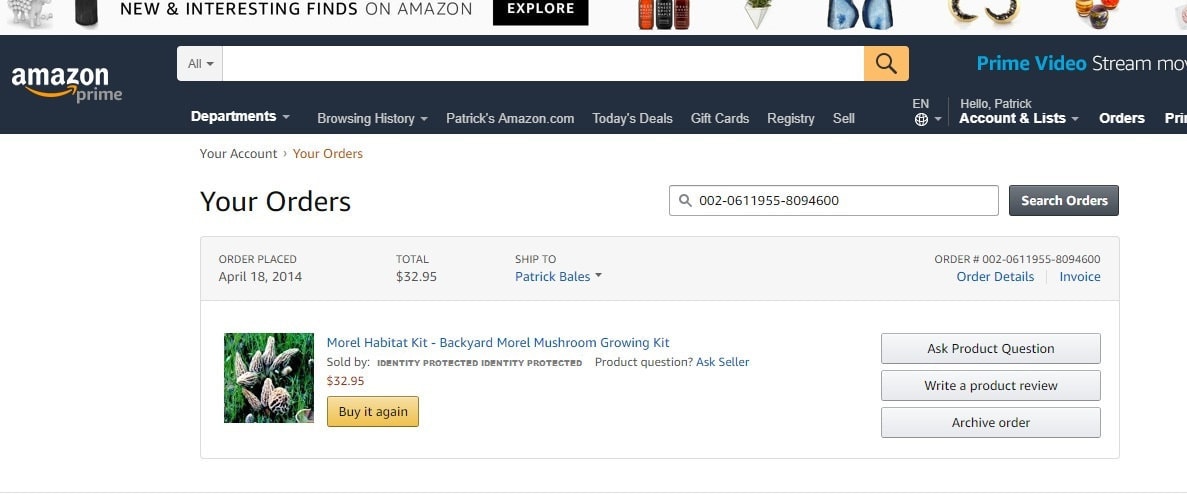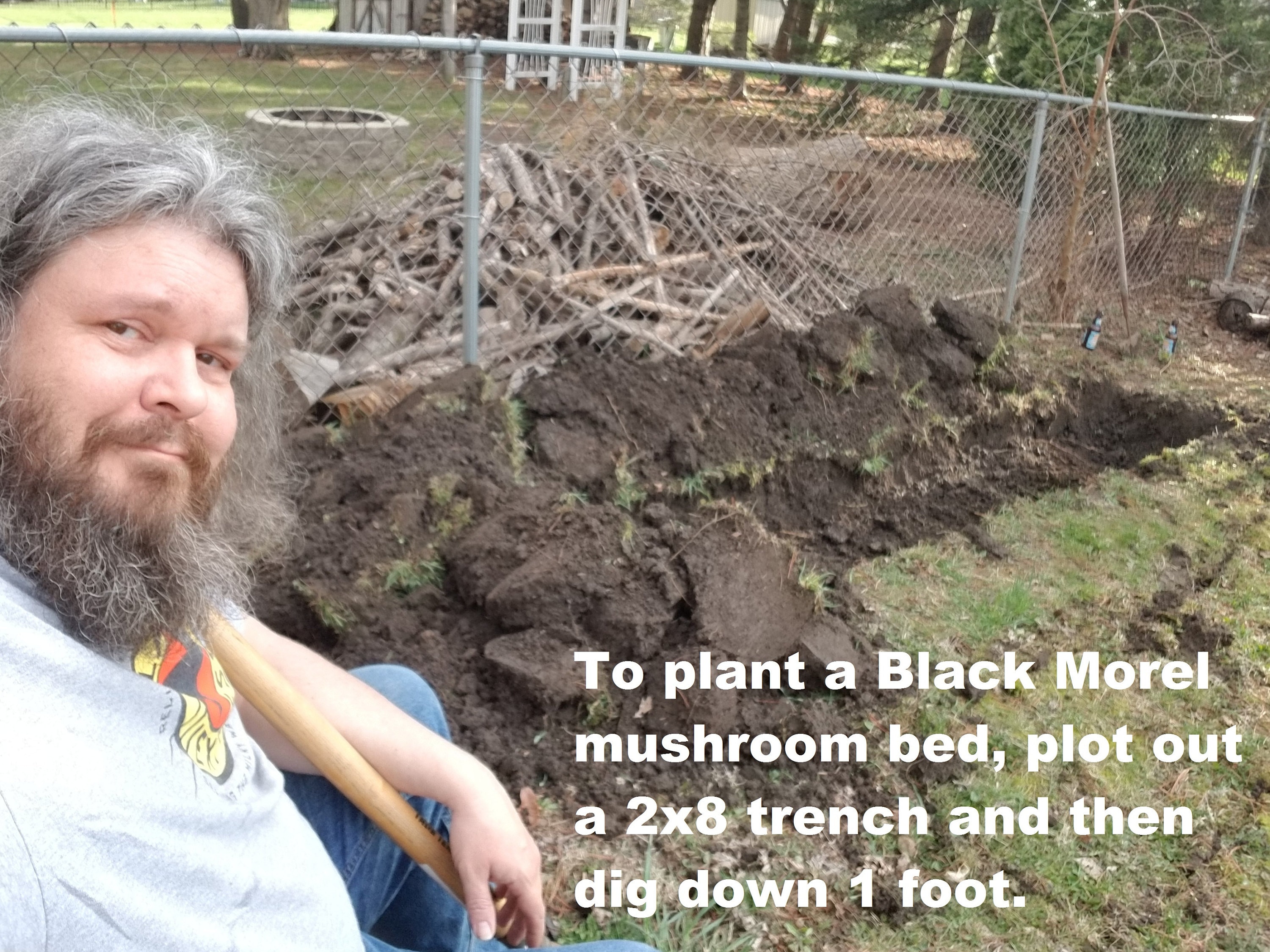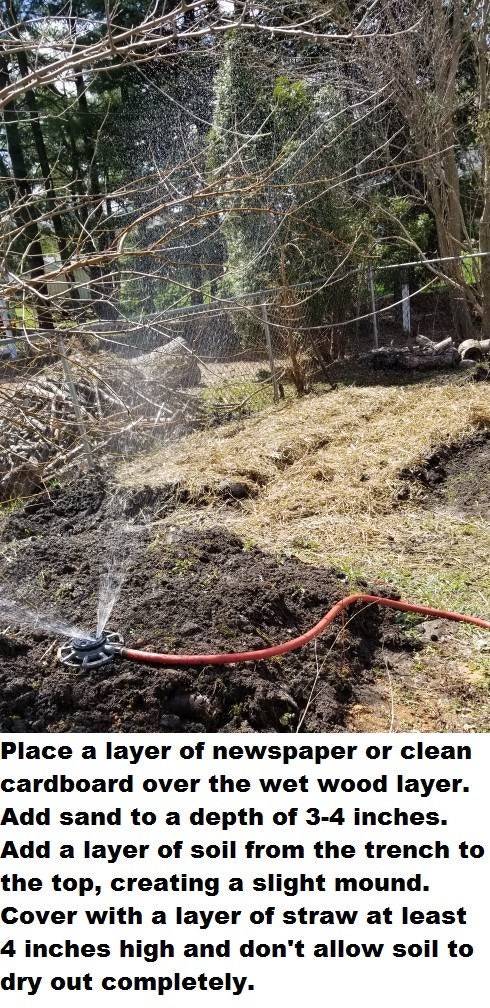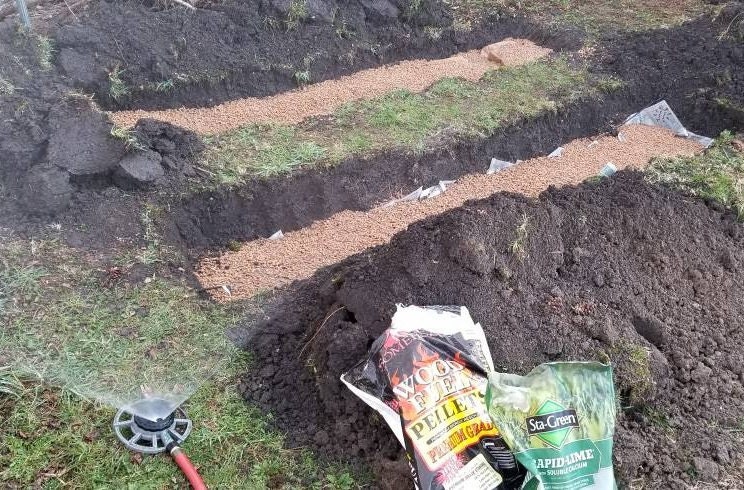My start in growing morel mushrooms came with the purchase of a morel mushroom growing kit from an online store just like this one. I'd been studying how to grow mushrooms indoors and thinking about how much time I wanted to invest in the project, when I saw a banner ad that caught my attention. "Start a morel mushroom patch in your backyard!"
Grow morels? The idea was totally intriguing to me. After doing a little research online, I confirmed that it was indeed possible to grow the elusive morel mushroom. It seemed that the critical factors were having a good kit to start with, full shade, good soil drainage, and the quality of the microclimate that is created in the area of the morel bed.
Thus began my first effort to grow morel mushrooms. I ordered the kit I'd seen online, planted it per instructions (followed to a "T"), and watered the site as instructed.

I waited months, and nothing came up. I contacted the manufacturer to find out more about the kit I had purchased. They were able to tell me that the species was "white morel", which I discovered with some disappointment was not native to my area - the white morel species is morchella deliciosa. In my area, we mostly get morchella americana and the variety known as "half-free morels", morchella punctipes.

Well, no matter - I kept at it, and maintained the conditions called for by the morel kit. For two years...
Then I got creative, added a bunch of spores from a packet of dried wild mushrooms. Maintained conditions for another year, and nothing came up.
The following Spring, I got creative again, added a bunch of yellow morel spawn material. Maintained conditions for another year, and nothing came up.
Well - at the start of the fourth year, I had totally different plans. I had begun working on my own formula for mushroom production blocks, and liked my results. Using whole oats and sawdust as substrate, I had begun to produce my own spawn.
I had read everything I could get my hands on regarding the cultivation of morel mushrooms. Books, articles, research papers, the Korean Journal of Applied Mycology, online forums, Facebook groups. I began collecting morel cultures and growing them out on my production blocks to compare results.
Studying morel cultivation in China taught me that not every species of morel can be easily cultivated. Some require environmental conditions and a native environment that my own backyard, here in northern Illinois, apparently could not replicate.
Chinese morel growers focus on morchella importuna, almost exclusively. 95% of morel farms in China grow morchella importuna.
I learned as well of attempts to duplicate this success in the USA, using morchella rufobrunnea, considered a burn morel species. (Did you know that Domino's Pizza once invested in a morel mushroom farm in Michigan? Fascinating trivia!)
I decided to stick closely to what works - I began producing spawn, AKA "mushroom kits" using m. importuna and m. rufobrunnea.
I found a proven method for planting as well. The layered bed technique that I use can be found in the book Organic Mushroom Farming and Mycoremedation by Tradd Cotter. It's a great read and I recommend the book to all aspiring mushroom growers, to read eventually.
Armed with my self-produced m. importuna mushroom spawn and my new planting method, I got to work this spring!

I started with a new plot, located 40 feet away from the old area. There's no point in mixing the results, I figured. My beds have been dug with a hand shovel to 3x8 and 1 foot deep, a little larger than the original method calls for. I ended up using something like 8 bags of wood pellets and 20 bags of sand. This year, I once again have high hopes for next morel season.


Some say that the problem with growing morels is that you can't be sure you'll get results. For me, however - that's part of the challenge. Morels are a new species to cultivate, one that we are still learning to get along with. With this kind of product there can be no guaranteed performance - there is just too little understood about this mushroom species. With that said, here are a few additional tips that I have learned during my research.
Morchella Importuna is not attributed to appearances following fire. Both species are said to enjoy full shade, a pH level of around 7.5, and soil with good drainage properties. Additionally, some say that morel fruiting patterns tend to follow the boundary of barriers such as concrete foundations, streams, or stone walls.
American planting methods typically involve some form of planting the morel spawn and leaving it in place. Chinese methods, on the other hand, are reported to involve a topical application of morel spawn by placing a bag of morel spawn with an open bottom directly on the top of the soil for two weeks, after which the bag is removed and discarded.
Standard grain and hardwood blends may be used for the production of the morel spawn - wheat, oats, corn, soy hulls. Strain potency and construction of the morel bed is key. The morel culture cannot be allowed to age for too long before a new culture must be produced from agar media inoculated by germinating spores, or from a cloned morel mushroom. The morel fungus grows and fruits in a pattern unlike most other commonly cultivated species. The vegetative growth of the morel occurs 1-5 feet underground, and in times of nutrient depletion, pushes nutrients upward to form hard nodules of morel mycelium called sclerotia. These sclerotia growths allow the morel to survive long periods of drought and extreme heat, while the protection given by the soil itself allows the morel to survive cold winter conditions.
Producing mushrooms, or "fruiting", requires periods where nutrient depletion in the morel bed causes the morel to fruit as a survival strategy. It is believed that morel mushrooms appear most often as a sheer survival strategy when food sources are at disappearing - morel mushrooms which in turn create spores that will soar off to new locations on the air currents.
A small percentage of mushroom spores from many species will be carried into the clouds, where they will join the spores from many other species, and will be absorbed as raindrops, to fall back to earth once again. Every rain drop contains a huge number of spores waiting to germinate once they reach the ground again.
To get started on YOUR morel cultivation adventure, select the morel kit that appeals to you, and get going! When asked, I typically steer m. rufobrunnea purchases toward the west coast, and m. importuna purchases towards the eastern states. These are the geographical areas normally associated with each type. Any customers may contact me for growing tips and answering any questions not found in the instructions, I'm happy to help you.
I wish you the best of luck with your grow! See my morel kits at the link below.
https://www.etsy.com/shop/MushroomManOfPeotone

